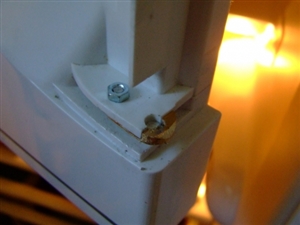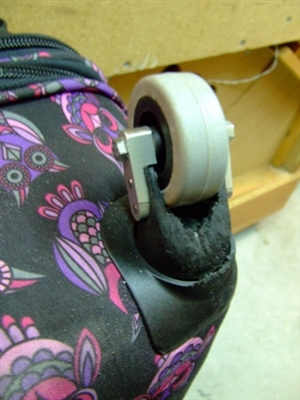To start thing off I have attached a couple of pictures of recent repairs I have made. Did it make sense to make these repairs? I think so.


Best regards
Roger
Andy C:
. . .
Roger Bryant, regarding the tape machine I am currently converting a load of cassettes to MP3 using a couple of Radio Shack tape decks from 1983, still going strong, and the Sony hifi system I got back in 1978 sounds as good today as it did then, just need to sort out the crackle on the volume pots.
I have an early Sony Walkman. Originally it was intended as a portable compact cassette player used with headphones. In practice, many people used them to play cassettes through hi-fi amplifiers. The quality was reckoned to be pretty good. I use mine mainly to play cassettes into a computer, so I can produce mp3 files.
The mention of crackle on pots prompts me to my last post in this series. Around 1980 I had a colour television set whose picture would spontaneously degrade into "fringing" round the edges. Image edges would split into three representing primary colours. Then the picture would spontaneously restore itself. I opened the back, had a fiddle and tracked the fault to a "noisy" potentiometer on the convergence panel. Eventually, after some difficulty, I managed to find a shop that could sell me a suitable replacement potentiometer. (This was before the days of Maplin.)
I replaced the potentiometer. Then came the tricky job of setting up the convergence. I had no cross-hatch generator available. I used a live broadcast of Test Card F and, using the grid lines on that, managed quite well to get everything aligned.
COULD I DO SOMETHING LIKE THIS NOWADAYS?
Only with an old TV set. In the absence of analogue broadcasts it would need to be linked via a "set top box" to a video recorder containing a suitable image - not an insuperable problem. Modern flat-screen sets, using plasma, LCD, OLED, etc., technology are an entirely different ball game from cathode ray tubes, - and there is no such thing as convergence on them. They are however much more difficult to get into and service; it's all module replacement nowadays.
Andy C:
. . .
Roger Bryant, regarding the tape machine I am currently converting a load of cassettes to MP3 using a couple of Radio Shack tape decks from 1983, still going strong, and the Sony hifi system I got back in 1978 sounds as good today as it did then, just need to sort out the crackle on the volume pots.
I have an early Sony Walkman. Originally it was intended as a portable compact cassette player used with headphones. In practice, many people used them to play cassettes through hi-fi amplifiers. The quality was reckoned to be pretty good. I use mine mainly to play cassettes into a computer, so I can produce mp3 files.
The mention of crackle on pots prompts me to my last post in this series. Around 1980 I had a colour television set whose picture would spontaneously degrade into "fringing" round the edges. Image edges would split into three representing primary colours. Then the picture would spontaneously restore itself. I opened the back, had a fiddle and tracked the fault to a "noisy" potentiometer on the convergence panel. Eventually, after some difficulty, I managed to find a shop that could sell me a suitable replacement potentiometer. (This was before the days of Maplin.)
I replaced the potentiometer. Then came the tricky job of setting up the convergence. I had no cross-hatch generator available. I used a live broadcast of Test Card F and, using the grid lines on that, managed quite well to get everything aligned.
COULD I DO SOMETHING LIKE THIS NOWADAYS?
Only with an old TV set. In the absence of analogue broadcasts it would need to be linked via a "set top box" to a video recorder containing a suitable image - not an insuperable problem. Modern flat-screen sets, using plasma, LCD, OLED, etc., technology are an entirely different ball game from cathode ray tubes, - and there is no such thing as convergence on them. They are however much more difficult to get into and service; it's all module replacement nowadays.
We're about to take you to the IET registration website. Don't worry though, you'll be sent straight back to the community after completing the registration.
Continue to the IET registration site